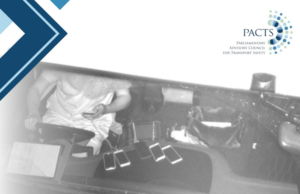E-scooters have lower casualty rates compared to other travel modes, according to a new report by the Royal Society for the Prevention of Accidents (RoSPA).
The report, UK E-scooter Safety Report, finds that the risk to pedestrians is ‘relatively low’, despite the common perception. RoSPA also found that there was no significant rise in incidents in the evening, again contrary to the perception that E-scooters are associated with anti-social behaviour around common pub closing times.
Motorcycles, pedal cycles and buses showed higher crash rates, with an estimated 0.66 collisions for every
million miles travelled on E-scooters, compared to 1.52 on buses, 3.33 for bicycles and 5.88 for motorbikes.
RoSPA said that its findings suggest some important safety factors that should be taken into consideration for future E-scooter use in UK. Given the rate of crashes that take place on single
carriageways, further investment in road design improvements, including segregated bike and
E-scooter lanes, would be beneficial, the report said.
It also said that safety standards should be applied to improve the visibility of E-scooters on the road, including those that relate to indication, lighting and braking. RoSPA also advised that the provision of providing mandatory training on the Highway Code and the practical operation of E-scooters would be
beneficial for all users.
The report also suggests awareness and training on E-scooter behaviour for other road users, in particular car drivers, would be beneficial as well as encouraging e-scooter users should be encouraged to wear helmets when riding. With that in mind, RoSPA encourages all E-scooter operators, and
manufacturers of private E-scooters, to increase their focus on safety, including product design and manufacture, passive safety features and rider education programmes.
The data from the research for the report suggests that the overwhelming majority of crashes and casualties occurred on single carriageways (72%), with incidents on dual carriageways accounting
for 10%. Incidents at roundabouts accounted for about 5% of total accidents.
In the UK, most single carriageways remain unsegregated, with bikes and E-scooters on the same
surface as larger-powered vehicles.
The vast majority (94%) of incidents occurred in local authorities where there was no E-scooter rental
scheme running.






















